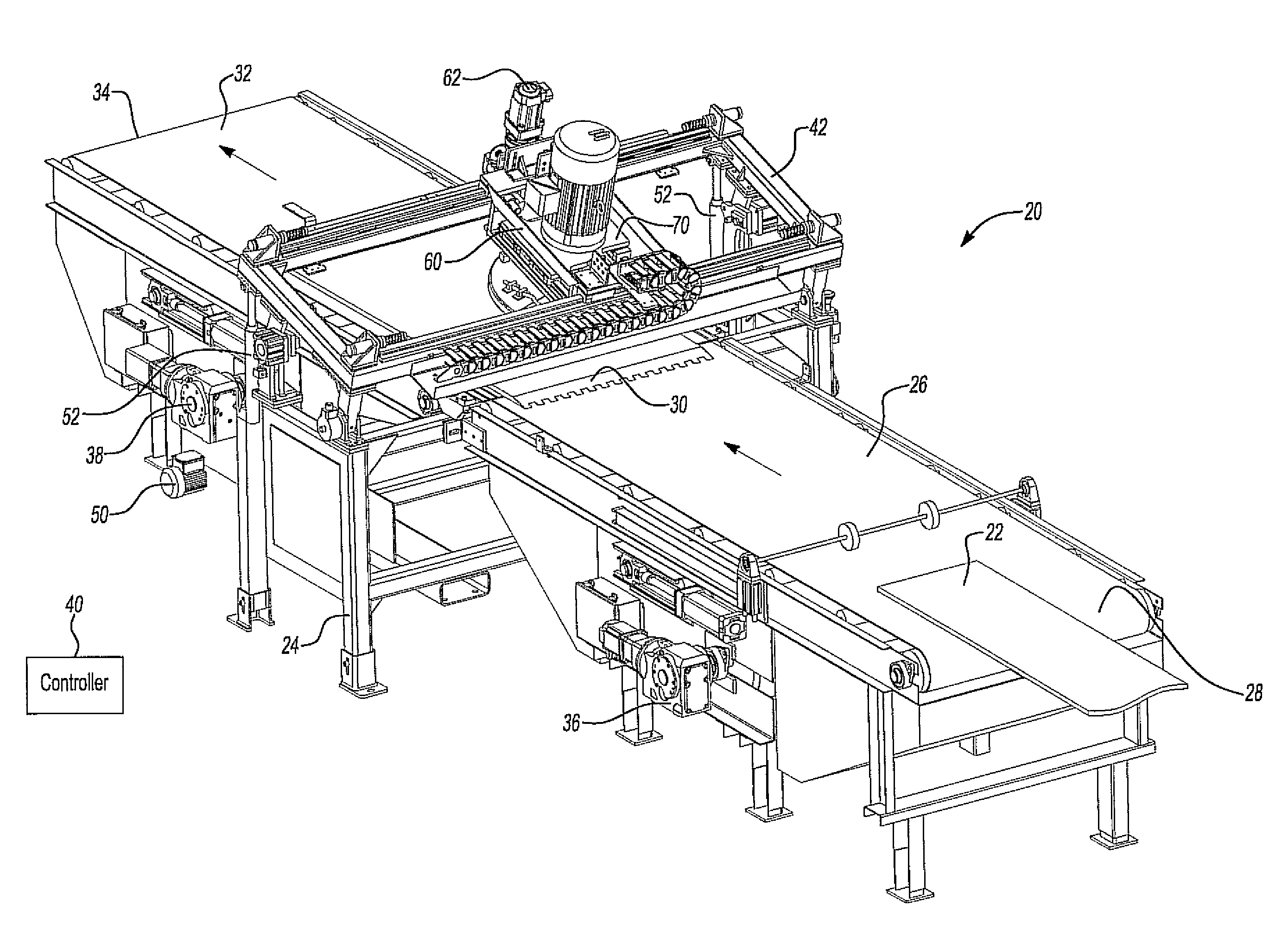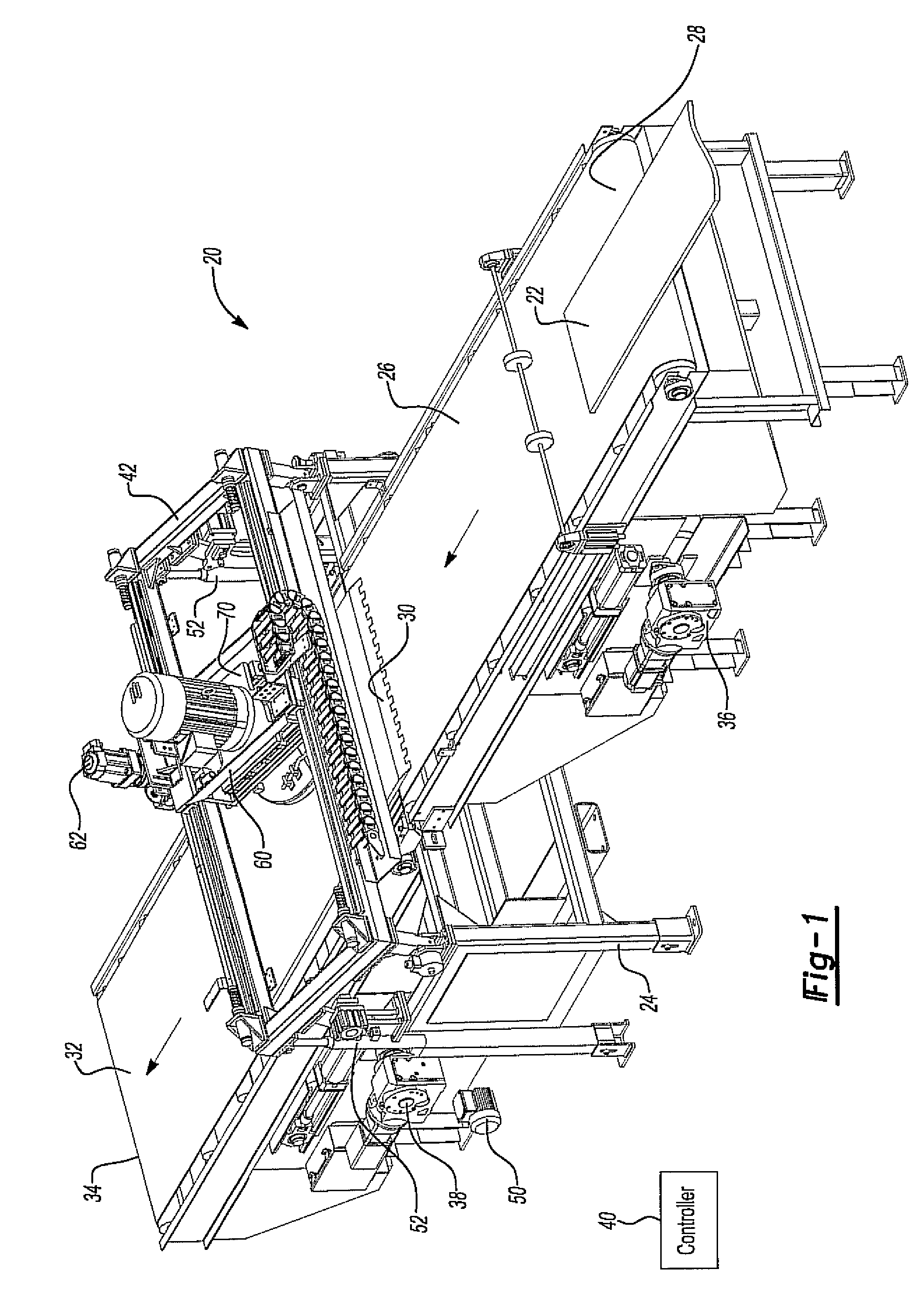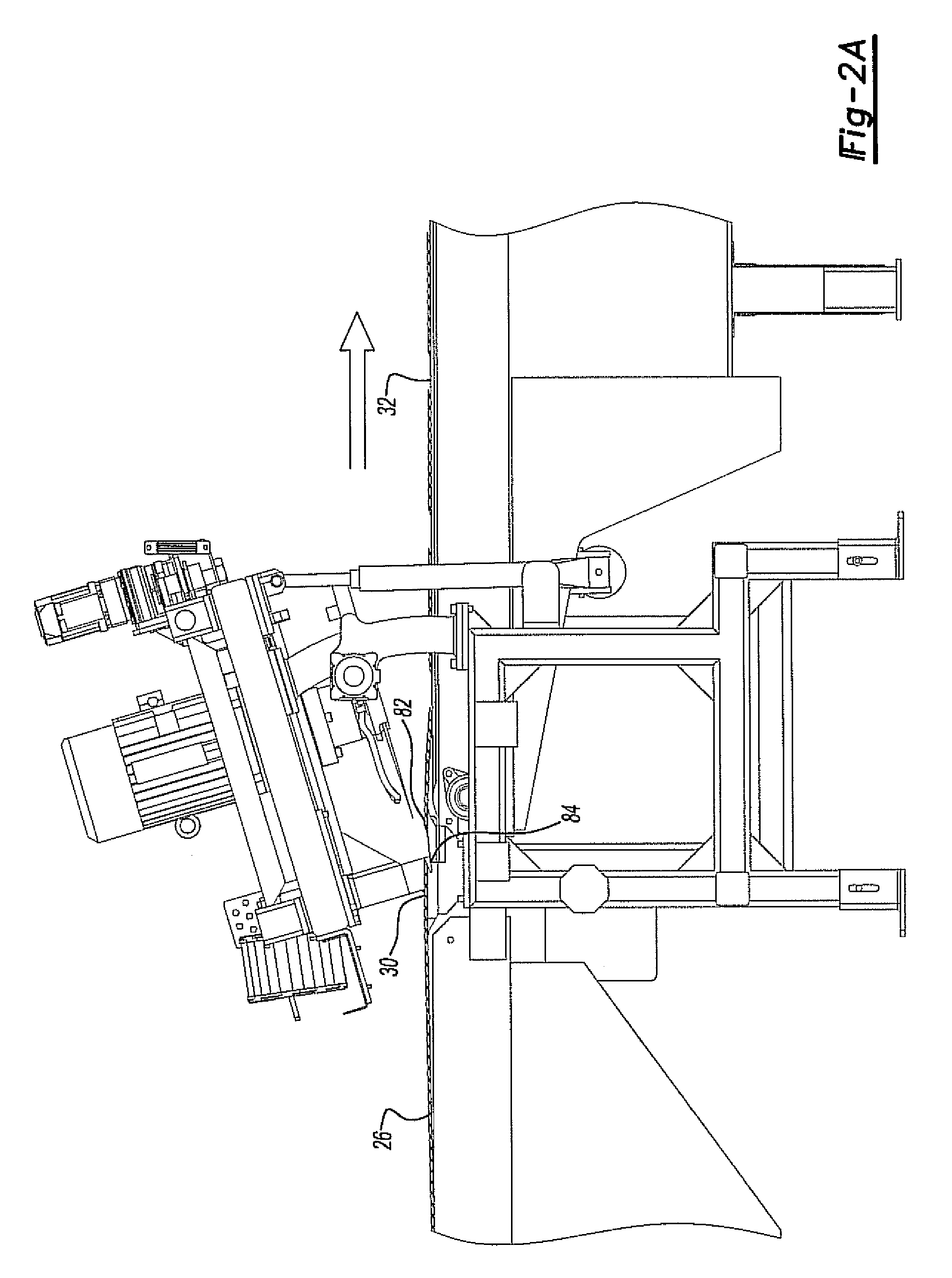Tire tread skiving machine
a tire tread and skiving machine technology, which is applied in the direction of sawing apparatus, tires, domestic applications, etc., can solve the problems of cannot be dynamically varied, excessive tire wear, and fixed angle of cut through tire tread extrusion
- Summary
- Abstract
- Description
- Claims
- Application Information
AI Technical Summary
Benefits of technology
Problems solved by technology
Method used
Image
Examples
Embodiment Construction
[0026]With reference first to FIG. 1, a preferred embodiment of a tire tread skiving machine 20 is shown for cutting tire treads from a tire tread extrusion 22. The tire tread extrusion 22 is typically constructed of a synthetic rubber, although other materials may alternatively be used.
[0027]The machine 20 includes an elongated frame 24, preferably made of stainless steel, which is supported on a ground support surface. An infeed conveyor 26 extends from one end 28 of the frame 24 to a cutting platen 30. Similarly, an outfeed conveyor 32 is also mounted to the frame 24. The outfeed conveyor 32 extends from the cutting platen 30 to an outfeed end 34 of the frame 24.
[0028]Both the infeed conveyor 26 as well as the outfeed conveyor 32 are preferably belt conveyors. A first motor 36 drives the infeed conveyor 26 while a second motor 38 drives the outfeed conveyor 32, and both motors are able to have independent adjustable feed rates.
[0029]Both motors 36 and 38 are precision motors, suc...
PUM
| Property | Measurement | Unit |
|---|---|---|
| degree angle | aaaaa | aaaaa |
| angle | aaaaa | aaaaa |
| rotation | aaaaa | aaaaa |
Abstract
Description
Claims
Application Information
 Login to View More
Login to View More - R&D
- Intellectual Property
- Life Sciences
- Materials
- Tech Scout
- Unparalleled Data Quality
- Higher Quality Content
- 60% Fewer Hallucinations
Browse by: Latest US Patents, China's latest patents, Technical Efficacy Thesaurus, Application Domain, Technology Topic, Popular Technical Reports.
© 2025 PatSnap. All rights reserved.Legal|Privacy policy|Modern Slavery Act Transparency Statement|Sitemap|About US| Contact US: help@patsnap.com



